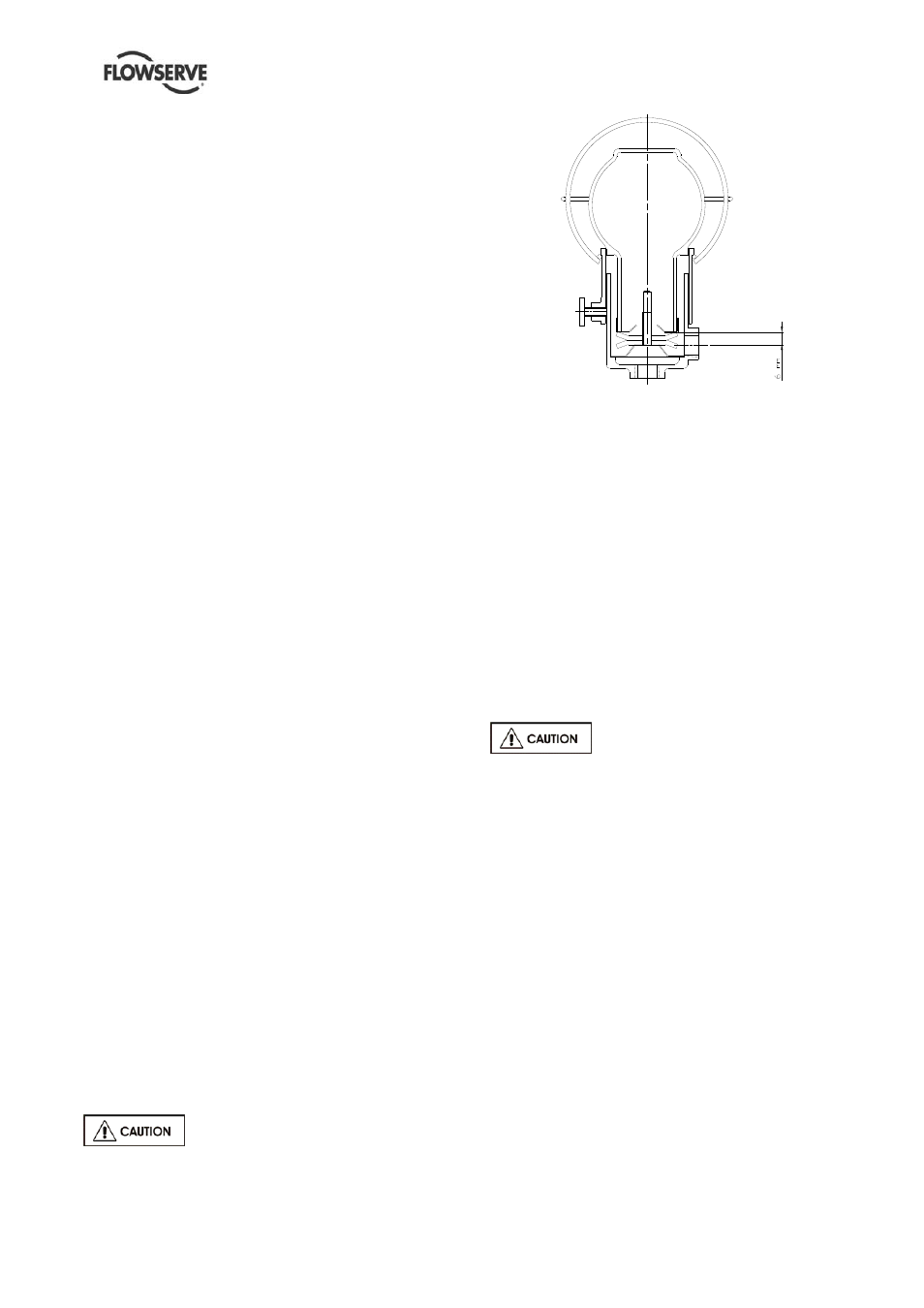Flowserve LPNV Worthington User Manual
Page 24

LPNV USER INSTRUCTIONS ENGLISH 87900031 – 06/14
Page 24 of 48
5.1.1 Lubrication of the thrust bearing
In LPNV pumps the thrust bearing is positioned on
the top of the shaft and it is oil lubricated.
The thrust bearing is constituted by two different
antifriction bearings, a bottom one separated
through a nut by a top one.
Before filling the bearing housing reservoir, flush
out the housing thoroughly with safety solvent and
a leading grade of flushing oil, compatible with the
lubrication oil that will be used.
The oil level must be maintained at the correct
level: oil lack may cause overheating and failure of
the bearings, while exceeding the correct level can
result in leakage from the labyrinth seals.
The constant level oiler can be adjusted by
changing the height of the cross arms which
support the glass reservoir, as illustrated for
TRICO oiler in Figure 5.1.
The oil circulation inside the bearing housing is
ensured by the rotation of the bottom ball bearing,
according to the description as follow.
The oil level inside the bearing housing is
designed to bath half of the ball’s elements
of the bottom antifriction bearing.
With the rotation of the pump, the wet part
of the ball’s elements is splashing oil to the
bearing housing walls.
The dropping of oil from the bearing
housing walls is reaching and lubricating
also the top antifriction bearing.
5.1.2 TRICO oiler setting (standard)
Constant level oil control inside the bearing
housing is ensured adopting a TRICO oiler as
standard:
a) Initial fill via top of housing, using overflow
plug to establish correct level.
b) Release thumb screw and remove bottle.
Establish a measurement from the center line
of the oiler connection in bearing housing to
the upper cross arm of 6 mm (0.24 in.); this
can be obtained by completely screwing down
the lower arm as illustrated on figure 5.6.
c) Fill bottle with recommended oil and install on
holder. Remove and fill bottle as many times
as is required to fill the bearing housing up to
the cross arm level and no air bubbles appear
in the bottle.
d) Remove bottle and ascertain that the oil level
is 6 mm (0.24 in.) from the center line of oiler
connection. Adjust upper cross arm as
required and lock in place with lower arm.
Never fill reservoir through the air
vent opening
.
Figure 5.1
The constant level oil control maintains a constant
level of oil in the reservoir. The control feeds only
enough oil to maintain the required level. It
operates on the liquid seal principle, feeding only
when the level in the reservoir is low enough to
break the liquid seal at the end of the shank, thus
permitting air to enter the bottle. It will cease to
feed when there is sufficient oil in the reservoir to
cover the hole in the end of the shank.
5.1.3 Inspection
Inspect the oil level in the bearing housing at least
once a day. Inspect the condition of the oil at least
weekly. Oil is always subject to gradual
deterioration from use and contamination from dirt
and moisture which is the cause of premature
bearing wear.
For oil lubricated pumps, fill the
bearing housing with correct grade of oil to the
correct level, i.e. constant level oiler bottle
(standard configuration).
5.1.4 Replenishment
Replenish the oil in the oiler as required. More
frequent replenishment at high temperatures may
be required.
5.1.5 Oil change
Frequency of oil change is dependent on pump
service and environmental conditions. As a general
guide, oil in the bearing housing should be
changed every 4000 operating hours or every six
months, after the initial change.
5.1.6 Lubrication Specification
The ideal bearing lubricant is a straight well
refined, neutral mineral, preferably of the turbine
type. It should not contain free acid, chlorine
sulphur or more than a trace of free alkali. It is
suggested that the oil conform to the following
physical characteristics.
